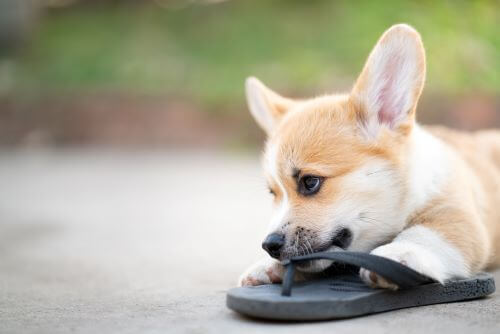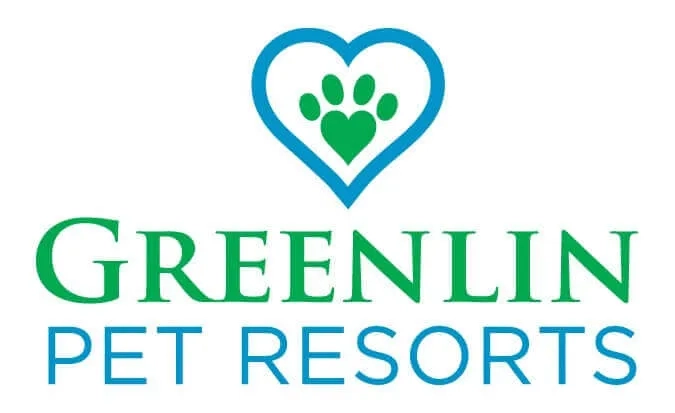How Dog Training Camps Tackle Problem Behaviors

Biting, barking, indoor potting, and jumping on guests are just some examples of unwanted dog behaviors. Usually expected after adopting a new dog or puppy, these behaviors can be discouraged with time and training sessions with a certified professional.
Coping with certain dog behaviors can be frustrating — even embarrassing, especially when it affects someone else. But, when your dog acts this way, it is not necessarily out of mischief or fun. Often, they use problem behaviors to communicate or tell you of a more serious issue.
Being able to decipher a problem behavior from a more serious issue will let you know if you need to seek help.
Undesired Dog Behaviors and What They Mean
A problem behavior in a dog is the same as a human with bad habits. Correcting problem behaviors takes practice, routine, and discipline to discourage and remove from your pet.
Some of the most common destructive behaviors seen in dogs are:
- Acting aggressively and biting people or other animals
- Acting clingy and anxious with their owner
- Barking and howling at anyone or anything in sight
- Begging for food or trying to climb to get food
- Chewing on furniture, door frames, and other prohibited items
- Climbing on top of furniture and tearing upholstery
- Guarding an area or toy from people or other dogs
- Jumping on people when they see them
Most pet owners do not realize that they inadvertently encourage these behaviors through reactions and lack of routine. Fortunately, problematic behaviors can change with consistent training and new routines with your dog.
Barking
Barking is probably the most common misbehavior many dog owners attempt to discourage. But barking does not only happen because your dog sees another or because they see a person riding a bike.
When a dog barks, it serves as one of the many forms of verbal communication in a group of canines. It serves to alarm the rest, stake claim on their territory, or as an act of social unison.
These are some of the most common reasons for barking:
- Territorial barking
- Imminent danger
- Attention-seeking
- Greetings
- Social unison
- Frustration
- Sickness
- Separation anxiety
It is safe to say that not all barking is bad, as there are many cases where a dog is just socializing. However, when a dog is barking because of illness or injury, those sounds should not be ignored. Owners should be curious to determine when and where barking happens, who or what is around, and what triggers the barking. If your dog is acting strangely and barking incessantly, it may mean they do not feel well and require monitoring and possibly a trip to the vet.
Identifying the why is the first step in stopping and discouraging the behavior.
Separation Anxiety
No one likes to feel completely alone. Dogs included. When you leave for the day, whether it is to run errands or go to work, your dog may feel abandoned and fearful that you will not come back. This is called separation anxiety.
Separation anxiety will cause nervousness in your dog, often leading to very destructive behavior. This kind of behavior can be expected, especially in households with a single dog. To make the situation worse, canine anxiety can lead to disastrous episodes yielding undesirable results.
Dogs who suffer from separation anxiety can showcase these signs:
- Loud and uncontrolled barking or howling
- Urinating and defecating around the house
- Destruction and chewing of furniture, door frames, and personal items
- Uncontrolled pacing in a circular pattern or back and forth
- Coprophagia, or eating what they defecate
Your dog may not display all of these signs, but if any are present, it might be best to address the issue before it worsens.
There are a couple of causes of separation anxiety in dogs. Often, it results from a change of owner or schedule, moving to a new residence, or a sudden change in household size (whether someone new enters the family or dies).
On Guard and Territorial Behavior
Whether your dog is guarding their food bowl or a toy, guarding is a natural response to feeling ownership over an object or even a person. Often, this behavior starts when your dog believes that there is a limited resource or that there is imminent danger where they feel the need to protect.
This behavior can be cute, at least at first. But when it leads to an aggressive response, it can lead to painful results, like biting, which can lead to serious legal and medical complications.
Guarding is often discouraged when it comes to toys, people, and objects, but In many cases, when dogs are territorial about their food, families choose not to correct this issue. Instead, they opt to condition themselves to leave the dog alone while it eats.
This idea works well in most households until it has children in it. Children do not understand boundaries, and when they cannot comprehend territorial behavior, they can trigger a dangerous response from a dog.
Destructive Chewing
Your dog naturally has a desire to chew on objects. It is their instinct and serves as a way to keep their teeth clean and maintain the strength of their jaws. In many cases, owners find this behavior more of a nuisance than anything.
There are a couple of conditions to rule out before determining destructive chewing is a behavior to discourage:
- Dogs who were weaned from their mother too early when they were puppies.
- Dogs that suffer from separation anxiety and display destructive chewing.
Identifying when and how often your dog is chewing can help deter them from doing so, as you can intervene with an appropriate chew toy they can gnaw on instead. If chewing is not tied to any other issues, it is important to keep toys and edible things for them to chew throughout the day. This includes bully sticks, bones, and other natural chew toys that can be found at your local pet store.
What Is a Dog Training Camp?
Often used when someone adopts a puppy, dog training camps exist to teach obedience training. A training camp can last many weeks and, in some cases, months. During that time, your dog will learn how to sit, heel, recall, and get off a person.
There are different kinds of goals that can be achieved through a training camp because programs are often customizable. Trainers work to learn about your dog and you and what your lifestyle is like to gear their training sessions to be most effective. With their gathered information, they can then create a program with commands that will benefit everyone involved.
How Does a Dog Training Camp Help?
Dog training camps are designed to train your dog to change its response and behaviors, especially when they are caused by a particular trigger. These programs are usually helpful by giving your pet the attention and discipline they need to work out of those unwanted behaviors, and in turn, they will receive positive reinforcement, like a treat or a classic “that’s a good boy.”
All of these programs are designed to teach you as well. Owners are often encouraged to learn from trainers’ commands and the discipline needed to avoid problematic behaviors. The success of the training is the owner and their family’s ability to keep responses to bad behavior consistent and disciplined.
There is no restriction on the kind of breed or age of your dog, with an understanding that all dogs are different and will require a custom program to address their issues. So, dogs of all ages—from puppies to seniors- are great candidates for this.
What if a Dog Training Camp Is Not the Right Fit for Your Dog?
It is true. Dog training camps might not work for all cases.
For example, pets excessively barking because they feel sick or in pain need veterinary care over attending a dog training camp. While situations of illness or injury occur, it is not as often as one would think.
The best thing you can do is learn who your dog is and how it responds to other dogs, distractions, and people. If, at the end of the day, a dog training camp does not work for your dog’s needs, you can seek alternative methods to train your pet. Creating a positive learning environment for your dog is the first step towards creating a positive and solid relationship with your pet.
Seek Classes Instead
Dog training classes are a great solution when training camp does not meet your or your dog’s needs. These classes are scheduled with a trained professional and are accomplished with other canine “classmates.” This presents an opportunity for your dog to learn to socialize with other dogs and work on their distraction training.
Try One-to-One Training
One-to-one training is a flexible alternative to other forms of training classes or camps. Trainers are usually more flexible with time, location, and where classes can meet. If the owner wants a private session, it is possible that their trainer can come to their home and complete training rather than at a facility. For some dogs, this is the best option as they learn best in their most familiar environment.
Consider Training Out Inappropriate Behaviors
Adding a new pup or dog to your family is a memorable experience we all look forward to. But with a new pet comes additional responsibilities. Dog owners must teach their new pets new routines and discipline any undesirable behaviors.
While there are many centers offering to train out problem behavior, our staff at Greenlin Pet Resort can help identify and treat your dog’s problem behaviors. You can trust us to work with you and your dog to determine milestones and ultimate goals. Learn more about our dog training services online.
Visit us online to learn more about our services, and reach out to us directly to learn more.
